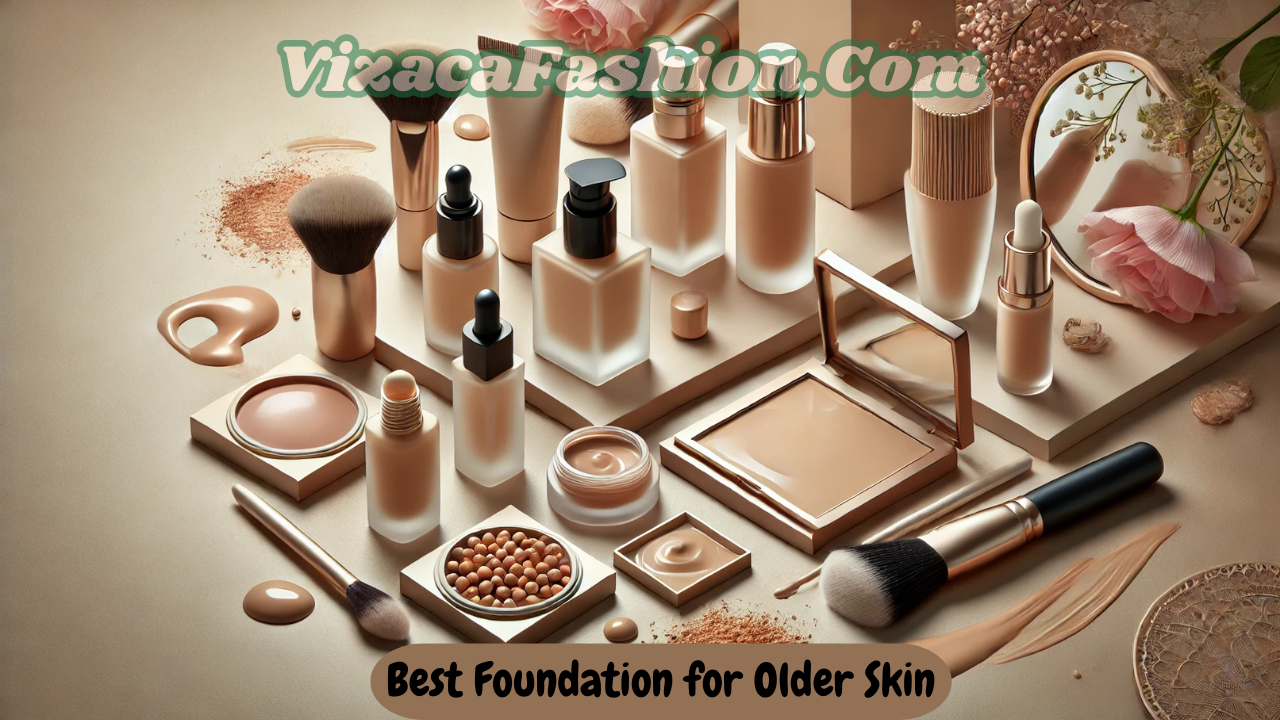As we age, our skin undergoes significant changes, making the choice of foundation more critical than ever. Finding the best foundation for older skin requires understanding skin texture, hydration levels, and coverage needs. This guide explores the ideal products, application techniques, and ingredients to achieve a flawless look, ensuring your skin appears radiant and youthful.
Understanding the Needs of Older Skin
1. Changes in Skin Texture
Aging skin often becomes thinner, less elastic, and prone to fine lines and wrinkles. Foundations for older skin must address these issues without emphasizing them.
2. Hydration and Moisture
Older skin tends to lose moisture faster, leading to dryness. A hydrating foundation is essential to maintain a fresh and dewy appearance.
3. Coverage Without Caking
While full coverage may seem appealing, heavy formulas can settle into fine lines. The best foundation balances coverage with a lightweight feel.
Key Features to Look for in Foundations
1. Hydrating Ingredients
Look for foundations with ingredients like hyaluronic acid, glycerin, and aloe vera. These help lock in moisture and plump the skin.
2. Light-Reflecting Properties
Foundations with light-reflecting particles can brighten the skin and minimize the appearance of wrinkles and dullness.
3. SPF Protection
Sun damage is a primary cause of aging. Foundations with SPF provide an added layer of protection against harmful UV rays.
4. Skin-Friendly Formulas
Opt for products labeled as non-comedogenic and fragrance-free to reduce irritation or clogged pores.
Types of Foundations Ideal for Older Skin
1. Liquid Foundations
Liquid foundations are among the most popular choices for older skin. Their lightweight texture allows for buildable coverage without settling into fine lines.
2. Cream Foundations
Cream-based formulas are excellent for those with dry or combination skin. They offer medium to full coverage with a dewy finish.
3. Serum Foundations
Serum foundations combine skincare benefits with makeup. Infused with active ingredients, they provide hydration, improve elasticity, and offer light to medium coverage.
4. Mineral Foundations
For those with sensitive skin, mineral foundations offer a natural finish. They are often free from harsh chemicals, making them a gentle option.
Best Practices for Applying Foundation
1. Prep Your Skin
Begin with a hydrating moisturizer and primer to create a smooth canvas. A primer with silicone can help blur fine lines and wrinkles.
2. Choose the Right Tools
Use a damp makeup sponge or a stippling brush for an even application. These tools prevent streaking and allow the foundation to blend seamlessly.
3. Layer Wisely
Apply thin layers of foundation and build coverage only where needed. Overapplying can draw attention to wrinkles.
4. Set with a Light Powder
Use a finely milled translucent powder to set the foundation, focusing on areas prone to shine. Avoid heavy powders that can settle into lines.
Recommended Foundations for Older Skin
1. Hydrating Liquid Foundations
- Ideal for those with normal to dry skin.
- Provides a natural, radiant finish.
2. Anti-Aging Serum Foundations
- Combines skincare benefits with lightweight coverage.
- Enriched with peptides and antioxidants.
3. Tinted Moisturizers
- Great for light coverage and a dewy glow.
- Perfect for everyday wear.
4. Full-Coverage Creams
- Suitable for evening events or special occasions.
- Offers excellent coverage without appearing cakey.
Common Mistakes to Avoid
1. Using Matte Formulas
Matte foundations can make older skin look dull and accentuate dryness. Choose formulas with a luminous or satin finish instead.
2. Skipping Primer
A primer tailored for mature skin minimizes the appearance of pores and creates a smoother surface for foundation.
3. Over-Powdering
Too much powder can make the skin look flat and emphasize fine lines. Use sparingly and only where necessary.
FAQs
1. What type of foundation is best for mature skin?
Liquid and serum foundations are excellent for older skin due to their hydrating properties and lightweight texture.
2. How can I prevent foundation from settling into wrinkles?
Always prep your skin with a moisturizer and primer, use thin layers of foundation, and blend thoroughly with a damp sponge.
3. Should I choose a foundation with SPF?
Yes, a foundation with SPF is beneficial for protecting your skin from further sun damage.
4. Can older skin wear full-coverage foundation?
Yes, but ensure it’s a lightweight formula and apply it sparingly to avoid a cakey look.
5. How do I choose the right shade for my skin tone?
Test the foundation on your jawline and check it in natural light to ensure a seamless match.
Conclusion
Choosing the best foundation for older skin involves finding a product that hydrates, smooths, and enhances your natural beauty. Focus on formulas with nourishing ingredients and a radiant finish to achieve a youthful, glowing look. With the right foundation and application techniques, you can confidently embrace makeup that celebrates your skin at every age.


